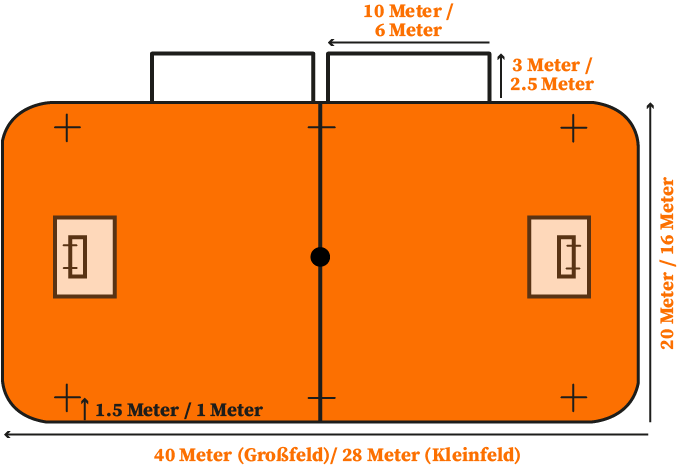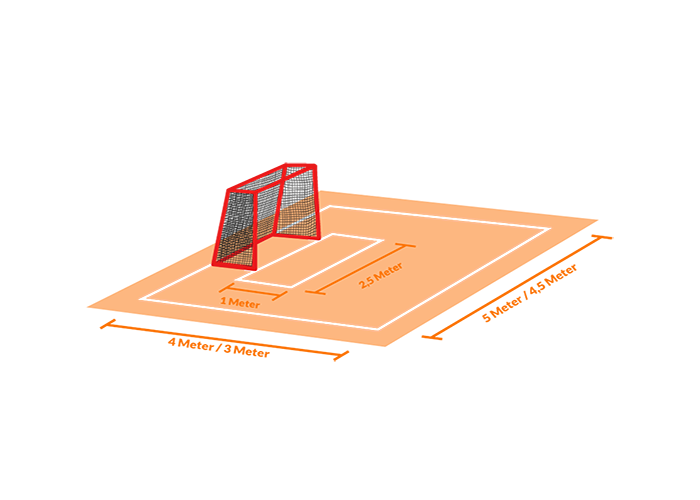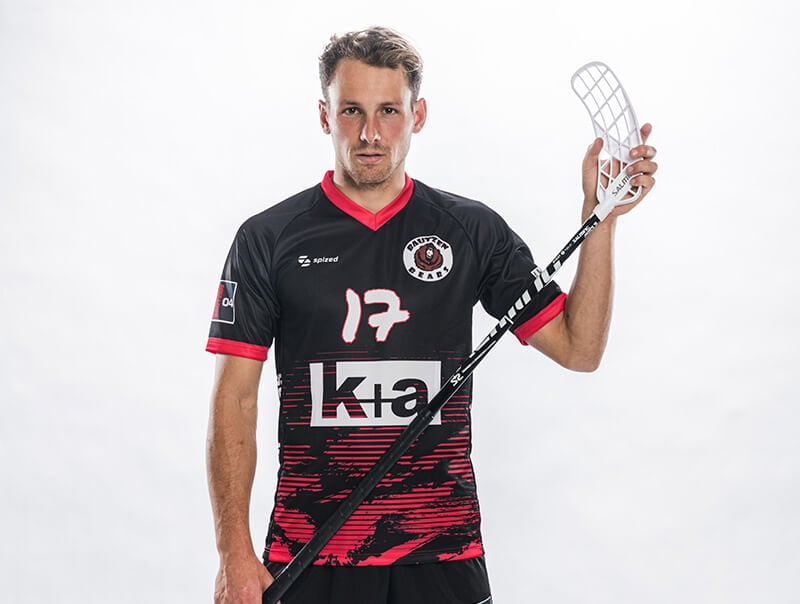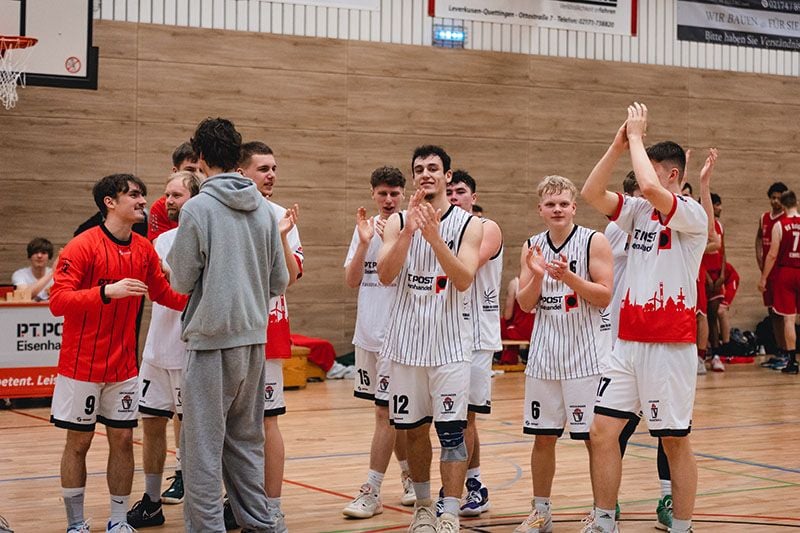A bully, an impact, a penalty shot and a free shot describe a situation in floorball where the ball is retaken. In the following sections, we will explain the four terms in more detail.
Bully: A face-off is taken when the period begins or when a team has scored a goal. Two players from each team face each other at the halfway line and place their sticks next to the cue ball. As soon as the referee blows the whistle, they try to win the ball. A face-off is also taken if there has been a stoppage of play without a free hit or penalty shot being awarded.
Impact: The impact is taken if the ball was out of bounds or if it touched objects above the court (e.g. the ceiling). The opponents must keep a minimum distance when taking the kick-in. A direct shot at the opponent's goal is also allowed.
Free stroke: If an offence is committed (foul play), the team concerned is awarded a free stroke. A free stroke can be the result of the following offences, among others: 1. hard body contact against an opponent. 2. pushing, shoving or kicking. 3. holding the opponent's stick. 4. touching the cue ball with the foot. 5. blocking or lifting the stick of the opponent. 6. field player enters the protected area. 7. the goalkeeper retains the ball for more than 3 seconds. 8. unsportsmanlike conduct (e.g. deliberate delay of game). 9. goalkeeper throws or kicks the ball off the field. 10. stick is thrown between the legs of an opponent. The free stroke is always taken at the point of the offence. However, never closer than 3.5 metres in front of the protected area and behind the imaginary extension of the goal line. The team taking the free kick may take it at any time. However, the ball must first be touched by a team-mate.
Penalty shot: A penalty shot is awarded if the offence was very serious and the team should have a direct chance to score. This is the case, for example, in the following situations:
1. A direct scoring chance is prevented by the foul play.
2. The goal is deliberately moved to thwart the goal against.
3. A team deliberately plays with too many field players to prevent the goal being conceded.
The penalty shot in floorball is very similar to the one in ice hockey. The attacker runs from the centre of the field to score a goal. He may touch the ball with his stick as often as he likes. If the goalkeeper touches the ball, the attacker is no longer allowed to play the ball.









.png)









































































